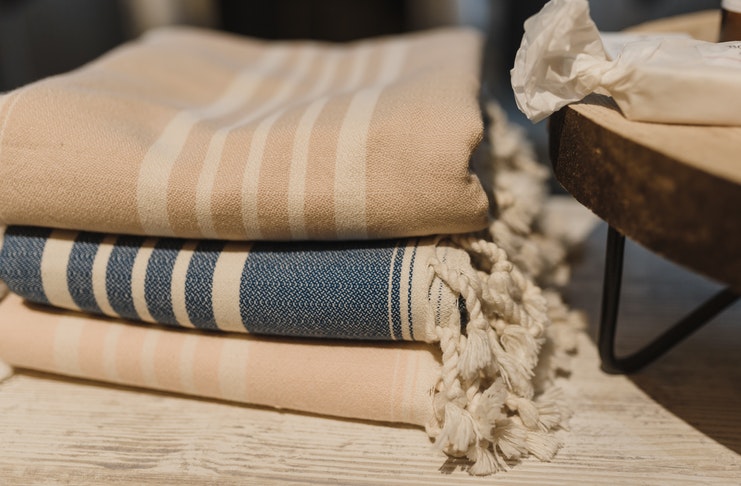India plans to set up seven large textile parks in the country in three years to boost exports of readymade garments and textiles. Each of these textile villages will be established on more than 1 thousand acres of land. World class infrastructure will be built there. Along with this, the country is planning an incentive scheme of Rs 10,073 crore for technological development in the textile sector and production of man-made fiber.
On the first day of this month, on the day of the 2021-22 budget announcement, Indian Finance Minister Nirmala Sitharaman announced a project to build six large textile parks across the country. The issue has come up in various top media outlets in India.
According to a report in The Economic Times , the Indian Ministry of Textiles has proposed to the Finance Minister to create seven integrated textile zones and garment villages across the country to double the investment in the industry to ৩০ 30 trillion by 2025-26. There is talk of uninterrupted water, electricity and other infrastructure and laboratories for research.There is nothing to threaten Indian investment. But we should open our eyes. We do not have a long-term master plan for export. However, whatever we want, the government is going to help as much as possible.Fazlul Haque, former president, BKMEA
Meanwhile, after the news of India’s huge plan for the export of readymade garments and textiles was published, Bangladeshi entrepreneurs have become worried. They believe that if their aggressive investment is properly implemented, there is a risk of losing the export market.
BKMEA vice-president Mohammad Hatem said, “The way India is investing in the textile and garment sector is definitely a threat to Bangladesh. Because, even though India is lagging behind us in garment exports, they are very strong in the textile sector. “Where India is planning for the long term, we are busy with the short term,” he said. There is a tendency to take action according to the problem. In order to survive in the competition, it is necessary to plan for a period of 10 years as well as to remove obstacles to business.
In 2016, the Union Cabinet of India approved a special package to overtake Bangladesh in garment exports within three years . At the time, their plan was to increase textile and garment exports to at least হাজার 4.3 trillion by 2018. But India did not go ahead as planned, nor was it able to overtake Bangladesh in the export of readymade garments. However, from 1995 to 2000, India was ahead of Bangladesh and Vietnam in textile and garment exports. Then the country fell behind. In 2003, Bangladesh and in 2011, India lagged behind in exporting garments made from Vietnam.
According to the World Trade Organization (WTO), India exported পোশাক 1.6 billion worth of garments in 2019. In the same year, the country exported the same amount of cloth worth 1,600 crore dollars. On the other hand, in 2019, Bangladesh exported 3,400 (actually ৭ 3,306 crore) and Vietnam তৈরি 3,100 crore worth of ready-made garments.
Badsha Mia, director of BTMA, an association of textile mill owners, said India was doing a lot to get to the front line even though it was lagging behind. He said Indians are urging Bangladeshi entrepreneurs who already import cotton from India to invest. Badshah Mia thinks that if India’s investment is properly implemented, it will be a threat to Bangladesh.
It is not that Bangladesh has not made a long-term plan. In 2015, BGMEA, an association of garment industry owners, formulated a roadmap to increase garment exports to হাজার 5 trillion by 2021. It emphasizes on construction of infrastructure, uninterrupted supply of gas and electricity, completion of renovations, creation of safe working environment for workers, exploration of new markets and ensuring fair prices of garments on priority basis. At the beginning there was a lot of discussion about the roadmap but later all the parties gradually became silent. Due to the coronavirus challenge, garment exports fell by 16 per cent to ৭ 2,748 crore last year.
Although it is the second largest exporter of garments in the world, Bangladesh has not been able to develop the planned industrial city for the sector. A garment village is being set up on 500 acres of land at Bangabandhu Industrial City in Mirsarai, Chittagong. However, initially only 36 institutions are going there. Apart from the garment sector, a handful of companies are also setting up factories in Mirsarai. But they are going in isolation.
Former BKMEA president Fazlul Haque said, “There is nothing to threaten Indian investment. But we should open our eyes. However, whatever we want, the government is going to help as much as possible. But if we don’t plan long-term soon, we won’t be able to move forward after a while. ‘
Fazlul Haque further said, ‘The business of garments of the future will be based on artificial fibers. But we are still covered with cotton cloth. So far we have no clear plan for the production of synthetic fibers.










